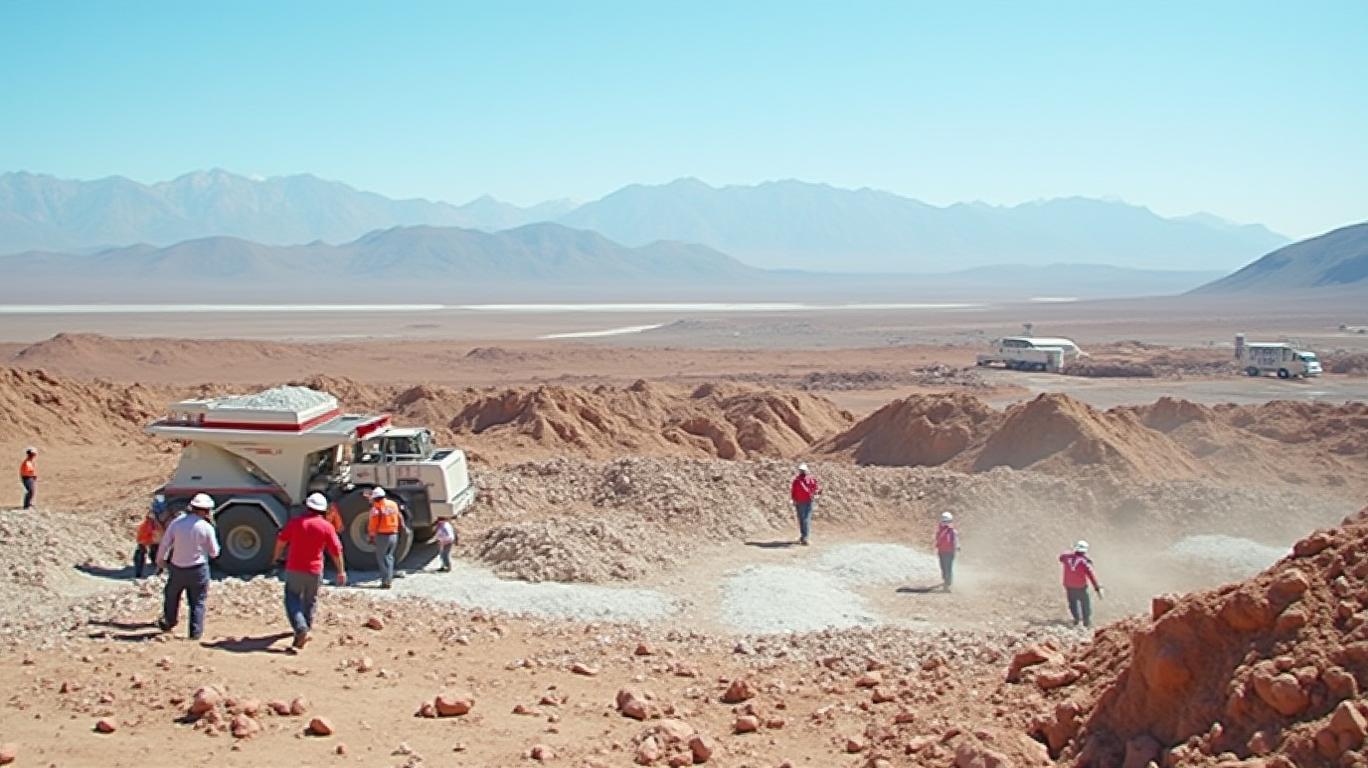Rio Tinto’s Leadership Transition: Navigating Mining’s Energy Shift for Value Creation
The mining sector’s evolution toward energy transition metals has never been more critical, and Rio Tinto’s CEO transition in 2025 offers a pivotal moment for investors. With current CEO Jakob Stausholm stepping down, the appointment of his successor will determine whether the company can capitalize on its strategic pivot toward lithium, copper, and aluminum—key drivers of the global shift to renewables—and sustain shareholder value amid volatile commodity markets.
Leadership Continuity: A Delicate Balancing Act
Stausholm’s tenure has been defined by a strategic realignment toward energy transition metals, including the $6.7 billion acquisition of Arcadium Lithium and a $900 million joint venture with Chile’s Codelco. His successor must not only preserve these initiatives but also address lingering challenges, such as project delays (e.g., the stalled Serbia lithium mine) and reputational risks stemming from past controversies like the Juukan Gorge destruction.
The internal candidates favored to succeed Stausholm—Chief Commercial Officer Bold Baatar and iron-ore head Simon Trott—bring distinct strengths. Baatar’s role in advancing Rio’s Mongolian copper project and lithium ventures positions him as a natural advocate for the energy transition agenda. Trott’s expertise in iron ore, which still accounts for 80% of earnings, underscores the need to balance legacy operations with new growth areas.

The Nominations Committee’s emphasis on continuity suggests a preference for an internal candidate, but external hires could bring fresh perspectives on M&A or decarbonization. Investors should monitor whether the new CEO prioritizes near-term profitability or long-term bets on lithium and copper.
Commodity Exposure: Riding the Energy Transition Wave
Rio Tinto’s portfolio is undergoing a seismic shift. While iron ore remains its cash cow, the company’s future hinges on lithium and copper, which are critical to electric vehicles, solar infrastructure, and grid modernization.
Copper: Rio aims to boost production to 1 million metric tons annually by 2030, leveraging projects like the Oyu Tolgoi mine in Mongolia. With copper demand set to grow by 50% by 2030 (IEA estimates), this focus aligns with structural demand.
Lithium: The Arcadium acquisition and Atacama joint venture are cornerstones of its lithium ambitions. However, execution risks persist, particularly in navigating community opposition and geopolitical tensions (e.g., Serbia’s lithium project).
Iron Ore: While demand growth is slowing, Rio’s Simandou project in Guinea—expected to begin production in 2025—could stabilize margins. Yet, overcapacity risks in the iron ore market remain a concern.
Long-Term Trends: Decarbonization and ESG as Competitive Advantages
The mining sector’s decarbonization race is intensifying. Rio’s investments in renewable energy—such as 2GW of solar and wind projects in Australia—highlight its push to reduce Scope 1 and 2 emissions. Investors must assess whether the new CEO accelerates this shift, including investments in low-carbon aluminum smelting (e.g., AP60 technology) and net-zero supply chains.
ESG compliance is equally critical. The new CEO must rebuild trust with communities and regulators after past missteps. Rio’s 2025 mental health initiatives and safety reforms (e.g., the Safe Production System) are steps in the right direction, but sustained progress is essential to avoid activist campaigns or legal setbacks.
The Investment Case: A Strategic Opportunity with Caveats
For investors, Rio Tinto’s transition presents a compelling opportunity—if leadership continuity is assured and commodity prices hold.
Bullish Catalysts:
- Lithium and copper demand growth driven by EV adoption and renewables infrastructure.
- Simandou’s production start could stabilize iron ore earnings.
- Decarbonization initiatives may unlock premium valuations as ESG investing matures.
Bearish Risks:
- Project delays or cost overruns in lithium ventures.
- A downturn in iron ore prices due to Chinese demand weakness.
- Geopolitical disruptions (e.g., Guinea, Chile) impacting operations.
Rio’s strong balance sheet (net debt of $5.5 billion) and consistent dividend policy (60% of earnings) provide a safety net. However, investors should demand clarity on the CEO succession timeline and the new leader’s strategic priorities by Q4 2025.
Conclusion: A Buy for Long-Term Conviction, but Watch the Transition
Rio Tinto’s CEO transition is a litmus test for its ability to evolve into a leader in the energy transition. While leadership continuity risks are manageable with internal candidates, the company’s success hinges on executing lithium and copper projects flawlessly while navigating ESG and geopolitical headwinds.
Investors with a 5+ year horizon should consider a gradual entry into RIO shares, particularly if the new CEO signals a bold commitment to energy metals and decarbonization. For shorter-term traders, wait until the CEO is named and commodity prices stabilize. The stakes are high, but the rewards—driven by a $12 trillion energy transition market—are transformative.
Final Call: Buy with a 5-year view, but hedge against near-term commodity volatility.

Comments
No comments yet